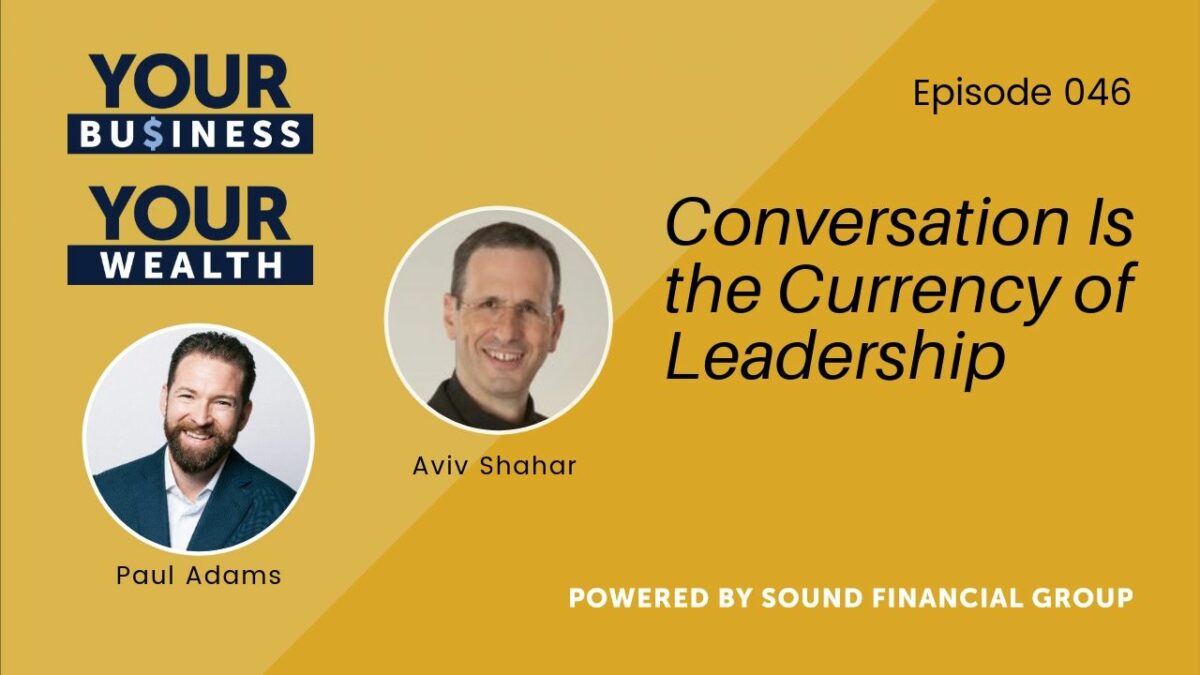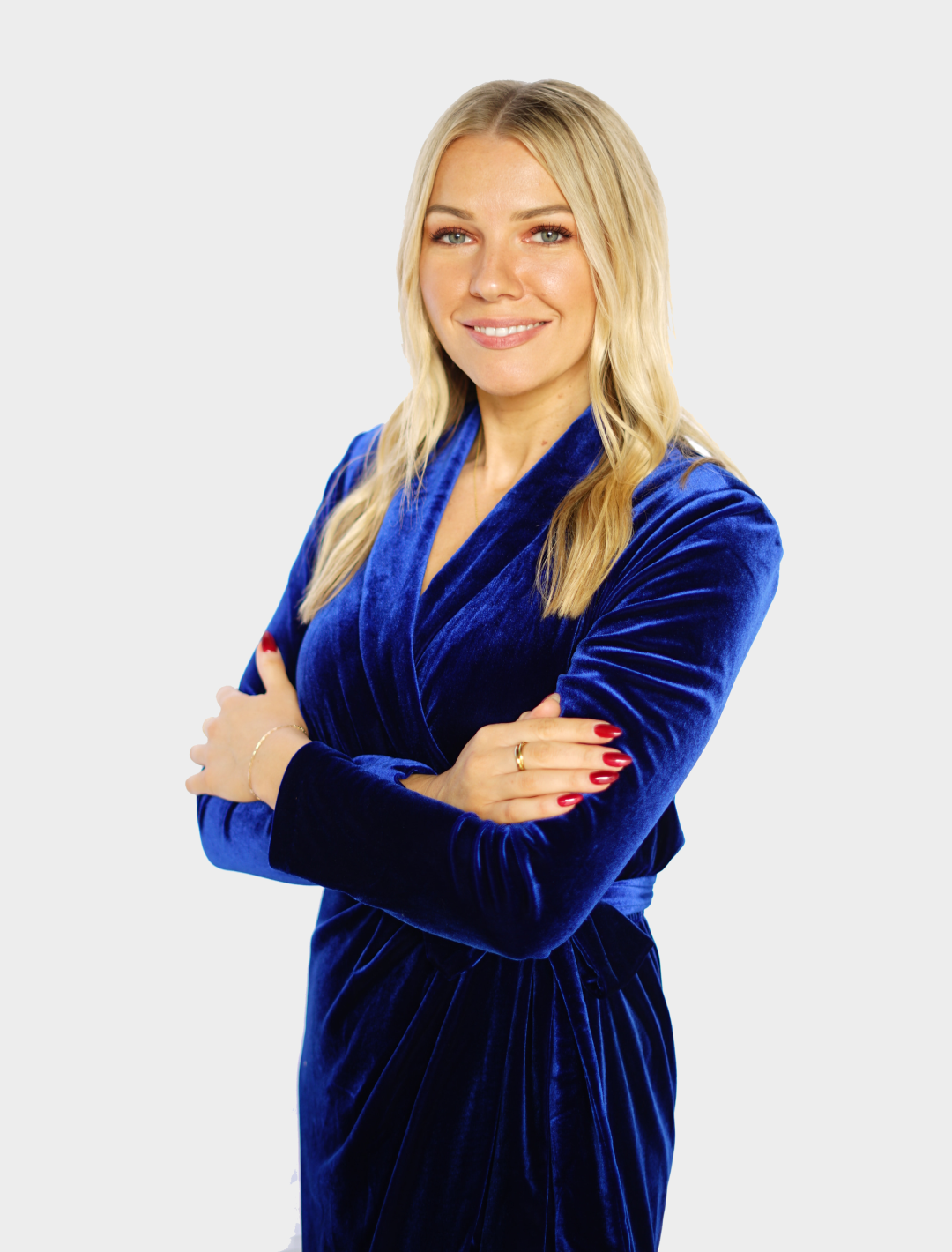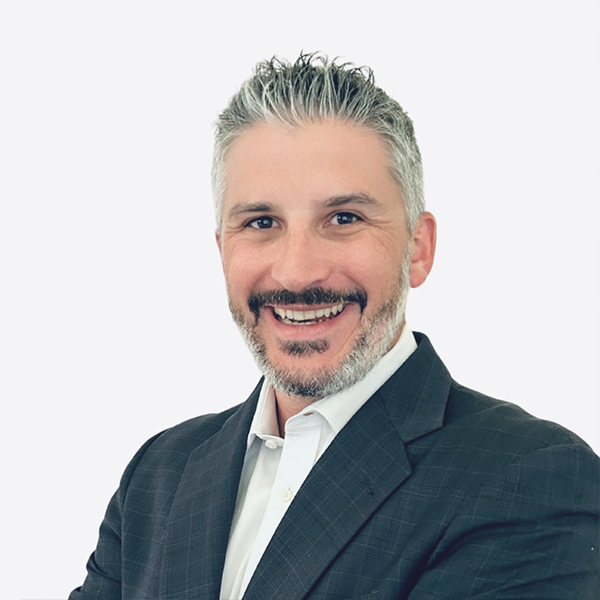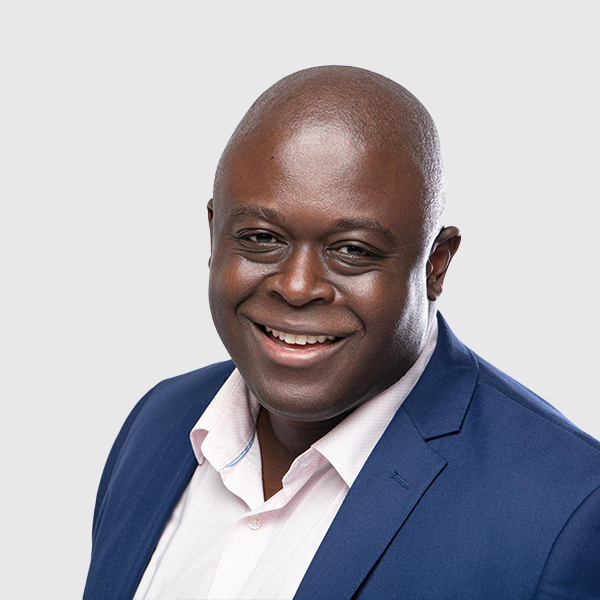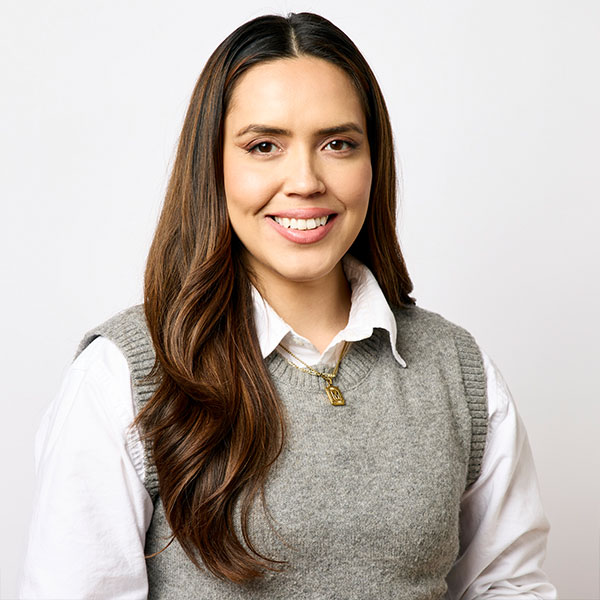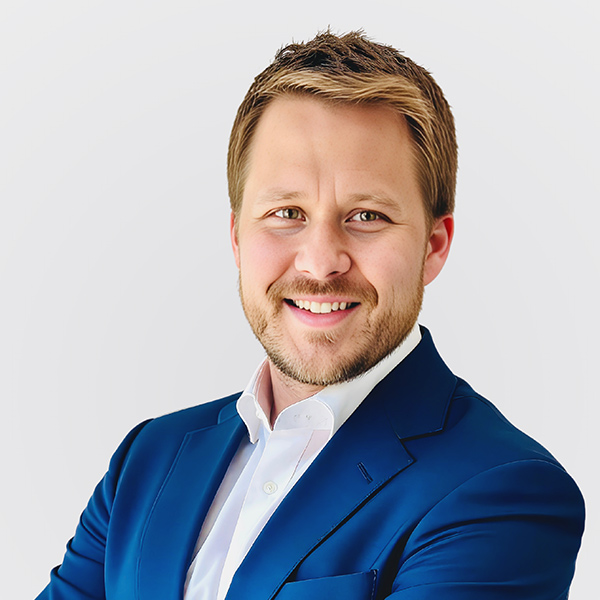Podcast 46: Conversation is the Currency of Leadership
EPISODE SUMMARY
Aviv Shahar has been helping senior executives create new futures for the last 16 years at his company, Aviv Consulting. Aviv is able to to unleash new energy and create happier and healthier teams within organizations. How is he able to do it? Well, it first begins with conversation and seeing it as a powerful currency; not just a tool.
WHAT WAS COVERED
- 02:05 – How did Aviv begin his career?
- 04:10 – Why did Paul invite Aviv on the show today?
- 06:35 – What is your greatest leverage point as a leader?
- 11:20 – When thinking about the highest point of leverage, what does Aviv look for?
- 19:40 – Conversation is a powerful currency.
- 25:10 – To create a new future, we must begin by creating a new conversation.
- 27:25 – We have to think about the future in a multidimensional way. Aviv explains a bit further.
- 32:05 – As a leader, ask yourself if you are having the right type of conversation with your team right now.
- 33:55 – Paul admits he’s never gotten good at a relationship because it was going well.
- 34:10 – Aviv says you should never have a schedule that has back-to-back meetings.
- 43:35 – Strategy is a ‘back from the future’ journey. What does Aviv mean by this?
- 46:40 – Who are Aviv’s ideal clients?
TWEETABLES
“An un-debriefed action is a wasted action.”
“Conversation is the currency of leadership.”
SHARE THE SHOW
Did you enjoy the show? We would love it if you subscribed today and left us a 5-star review!
- Click this link – Sound Financial Bites
- Click on the ‘Subscribe’ button below the artwork
- Go to the ‘Ratings and Reviews’ section
- Click on ‘Write a Review’
RELATED LINKS
- Sound Financial Group Website
- Aviv Consulting
- Create New Futures: How Leaders Produce Breakthroughs and Transform the World Through Conversation
MUSIC CREDITS
“Legends Are Made” Copyright 2017. Music, arrangement and lyrics by Sam Tinnesz, Savage Youth Music Publishing SESAC and Matt Bronleewe, UNSECRET Songs SESAC
EPISODE TRANSCRIPT – FORMATTED PDF
EPISODE TRANSCRIPT – ORIGINAL TEXT
Hello, Paul Adams here. Welcome to Sound Financial Bites, where we help you with bite-sized pieces of financial and life knowledge to help you design and build a good life.
Hello, and welcome to Sound Financial Bites. My name is Paul Adams. I’m your host of today’s podcast, as well as the president and CEO of Sound Financial Group, where we work to help our clients design and build a good life. We’re glad to have you on today’s podcast, where today we’re going to be talking about the subject of career, business, being entrepreneurial, and leadership. We talk a lot about we can have this career in business podcast that we’ll do, and we also have them there on financial philosophy, and then we have podcast on the just good life things. Things that have to do with, it could be a marriage counselor, it could be a biohacker, it could be a personal fitness guru speaking on the podcast. You know we have our analytical financial cast, those things where we drill deep into the numbers, many of you sort of gloss over. For those of you that are not analytical, I recommend you don’t listen to those episodes while driving. But today, we’re going to be getting a chance to journey into a world of knowledge around leadership and knowledge around execution that most people never get a chance to deep their toe into, because we have a unique guest with us today, a gentleman named Aviv Shahar of Aviv Consulting.
Before we jump into our episode, I’m going to spend an appropriate amount of time, really setting the stage of introduction for Aviv, who he is, what he has done in the past and what he does now, because today, he’s going to produce for all of you the most important leadership insight ever. So let’s kind of step back and look at what where Aviv started. Aviv began his career in the Israeli Air Force, not just as a fighter pilot but subsequently training other fighter pilots. This discipline gave him the ability to think through perfect execution, planning missions, and the discipline of the debrief which incidentally, if you’re taking notes today, writing down those few words, discipline of debrief could be life changing for you. But he adopted a life model for continual learning, and he’s often heard saying that, “An un-briefed action is a wasted action.” So Aviv’s consulting works with Fortune 500 companies that hire him to help senior teams create purpose-inspired vision for the innovative strategies that they’re carrying, primarily heads of business units or who get a chance to work with Aviv. He’s worked with Alcoa, Chevron, Cisco, DuPont, General Mills, Hewlett Packard, Lufthansa, Procter & Gamble, and global clients in the total of 20 countries. So his experience in coaching is high level performance folks really comes from starting training high level performance people in the Israeli military. During his time as a leadership in training, I’m not saying it with justice, but to the degree to which he’s able to lead teams, and as the leadership work is he helps them innovate and grow, develop strategic innovation in a multi-functional approach to bring together all the asset’s capabilities and disciplines of an organization, because they can use that to create new futures.
Now what caused me to want to have Aviv come on the podcast today, was something you said and you’re very brief that I think will forever change my life or how I would I accomplish anything, whether it’s personal, business, leadership, is I was talking about some goal I had for the future. He just looked at me and he said, “Paul, for that to happen what has to be true?” For that outcome you want to have what has to be true. You see his upcoming book, Creating New Futures, how leaders produce breakthroughs and transform the world through conversations. He’s going to help people better understand what they have to do to create those better new futures that he gave me a huge insight too which is a few words what has to be true. So Aviv I thank you so much for being on the podcast today, I’m glad that you could be with our audience and share your knowledge, welcome.
Thank you Paul. Thank you for having me.
You’re welcome. I think your advice can give big kick out of us today. What would say– and I’ve kind of got some questions here to ask you, what would you say is the first most critical game-changing insight that you explore with the executives you work with?
It’s a great question. I will answer this, the beginning of the answer to that question with a question which you’ll appreciate coming from the field of finance. What I will do is I will frame for you the question, then I’m going to let you think about that question in the background while I frame two other critical points about adult learning and development. As you indicated in your introduction, I’ve now been working at the intersection of strategy and innovation with leadership and learning from more than three decades. So I consider myself an authority on the subject. With that in mind, let me say then the following: The question that I position, that I frame for leaders to make entry into a game changer that perhaps the most important leadership insight ever is the following question: What is your greatest leverage points as a leader? What is the point of highest leverage for you as a leader? Now you will appreciate that the contemplation of leverage from the background of finance, but in the leadership context, what is their point? So think about this in the background because I search before I actually answer this question I want to address something else, which is that the first critical point we have to appreciate about adult development, adult learning, adult education, is what I call the 90/10 rule of adult developments. As adults, we have to appreciate the condition of the adult brain. What I found with working with executives all round the world is that for adults to learn and develop optimally. We do so by discovering or by receiving 10% of new knowledge, only 10% of new knowledge, but 10% of new knowledge that’s fashioned in a way that allows us to rearrange and recast the other 90% what we know. I’m proposing that we should never design a learning interaction to contain 90% or even 50% of new knowledge. I propose that as adults we learn best by being stimulated to recast or reorganize, to reposition what we already know, what we already– as part of our framework. If we can identify those nuggets of wisdom, the 10% new nuggets of knowledge and wisdom that can catalyze the rejuvenation and recasting of what you already know, that’s where you get the greatest impact for adult learning. It’s because of this first critical point that I like to work through questions. Hence the question that I asked of you. Hence the question that I just framed which is what is the greatest point of leverage for you, for anybody, leading any organization or team or any size of organization. It could be 5 people or 5,000 people. What is the greatest point of leverage? Because like it’s almost you are not working on this question, yeah, all the time that I’m talking about all these other things about adult learning, you are not trying to figure out what’s the answer to this question and your neurons, they are firing for new connection to resolve the riddle. I need you to make that calorie investment because you’re brain is working very hard now. I need you to make that investment because there is ultimately what will make that insight, the game changer into memorable one. So that’s why it is so critical to work with questions. When I– for when I meet with senior teams, this is often my first question: What is the point of highest leverage? And they look at me puzzled for the first few seconds because it’s somewhat outside the frame of consideration, of the day-to-day around the business kind of focus. Sooner or later, somebody smart in the room will say, “Well, the highest point of leverage is that we get to determine our resource allocation. We have the power to choose where and how to allocate our resources.” To which I reply, “That’s a great answer, because indeed that is one of your point of– one of the critical points of leverage that you have as a leader or as a leadership team, but I’m looking for an even higher other leverage.” What’s a higher point of leverage then determining how and where to allocate your resources? Then people really look at me puzzled and wonder where do I leading them.
Then somebody else quiet in the background will say, “Well, as a leader, I get to define the mission and the vision of our attainment, of our organization.” You guessed it, my response is, “That’s a great answer, but can you frame this answer in an even higher level, higher other idea?” And Paul, I now have them really working hard, their brains are firing, all those neurons, neural connections, their firing to make the connection to resolve the mystery, to resolve the riddle.
Aviv, I know mind are– and I know our listeners are. I mean I can feel what I’d be like to be in one of these rooms in a big tall building somewhere with a team of already accomplished executives wrestling though this exact picture you’re painting for us. I know we’ll be jumping ahead for me to ask but now I am dying to know and I’m even dying to guess. Although I’m pretty sure your answer with whatever I guess is not everything I could I guess, but at least that everything except the answer is going to be, “That is a great one.”
I’m happy for you to guess, let me just for a long– for a second to bring signs behind the choreography that I’m describing, because we know live in this age of instant gratification. We are no longer– pretend to go on contemplative works to hold the question in mind for many hours or many days. But some of the most profound and meaningful breakthroughs, in all fields of knowledge in business and outs, and you name it, they reveal themselves, their access, because somebody held this inquiry, this line of inquiry for long enough, for the breakthrough, the epiphany of the aha to find them. I need us to step as adults into this state of insistent curiosity and innovate these learning muscles such that if we are going to step into transformative experiences, they’re fueled by this energy and this is ultimately why the senior leadership team is going to be able to, two or three days later come out with new decisions, new agreement, new alignments, new strategy, and an energy that can innovate and mobilize a very large organization. It begins there in the first 5 to 10 minutes.
I can see it and I don’t know what the biggest leverage point is. If I may– because I don’t want to lose out there, there’s something you said there about 90%. The key is allowing the 10% we take and to modify the 90, and I’ve read studies about our brains and the fact that when you see a new piece of information, like something new you’ve never seen before, what’s firing in your brain is only 10% optic nerve and 90% your memories, which is what you’re bringing in the table. So even what you’re saying about, the 10%, 90% seems to actually line up with the way our brains are actually working.
That’s exactly right. That’s exactly right, and as teachers, as leaders, as mentors, as coaches, we have to customize and we have to curate our interaction with our teams to include this critical awareness about brain size and the anatomy of learning. But let me live now to this point, because the last thing I said there if you told me that the highest point of leverage was that you get to define the mission and the vision of the organization, my reply, my response to you is, “That is the right answer, but I want you to frame it at an even higher level.” If you said to me, “Can you give me a hint?” The answer to that is, “Sure, if the vision, if the mission of the organization is more than a fancy slide deck that you will print and post on the company’s wall and pray that you’ll make a difference.” If it’s more than that, it will do what? What will it do?
It’ll travel. People will own it, know it, if it’s more than something we paste on the wall, people will learn it and they’ll live in their common sense.
Exactly right, and therefore they will do what with it?
They would use this as a bearing point.
They will use it in what as a bearing point?
In conversation.
That’s right. That’s your highest point of leverage. Your highest point of leverage is that as a leader, you’ll get to frame the conversation and agenda. You’ll get to determine what are the conversations that we enter, how do we choose to frame these conversations, and why do we enter these conversations and not others, that’s what you do as a leader. Your highest point of leverage is you get to set the conversation agenda. That’s right. If the mission and the vision are more than a nice PowerPoint slide then they will guide, they will inform your conversation, they will become the reference you come to, you measure yourself again, you test again and again in your conversations.
So it will all be a practical example or translation of this aware where somebody would see this happen in their leadership. Let’s say somebody is listening to us, a team, they’re that kind of typical executive or business owner that’s kind of crossed and the reason I bring up top 1% in income is only because they’re out competing 99% of the marketplace. They’ve done something uncommon to get there. If I’m introducing the podcast, they’ll say okay so I get to shape the conversation, frame the conversation what’s going to happen, what’s an example of how does it work in an organization and then how do you coach people to serve and be aware of it, to move the needle somehow in their organizations around this idea?
Right. Well first of all, you talk about your listeners, the 1% tells and I’m sure they’re proud to be part of the 1%, they probably innately already know what I just shared with you. Perhaps the implicit was never rendered explicit, but this is like I just framed with you is perhaps more than you, a validation of an intuitive, something that they know and they’re likely in the position they are in because to an extent they have already done so. That’s my first reply. The second is, that the place to begin is to recognize that if this is true, if what I just said is true, then the implication is– for that conversation is the currency of leadership. Conversation is the currency of organizational life. If you’re leading a small or large organization and you abide by this truth and you believe in it, you will get up in the morning with a whole new kind of frame of mind. For a start, you will treat your interactions and your agenda that day and then your meetings with so much care, because you will understand that whether you meet with clients, with suppliers, with partners, with people on your team, the way you use the currency of leadership, the way you use the currency of organizational life which is conversation, is the ultimate competitive advantage.
So I come to speak on the behalf of our listeners for a moment, because I got to think there’s other people out there just like me as you, as this conversation settles in, and it’s kind of saying, “Of course. Now I’m taking the 10% and I’m putting it on top of the 90% I have,” and yet one of the first things I think about is, “I’m not done that.” I mean certainly more than once but how often do we get through the day-to-day and we’re not reflecting on the currency I’m going to spend today or what I’m going to transact with will be these conversations. Sometimes we’re just talking to a staff person to get something done, and not thinking about everything is traveling in that conversation. So first off, I just want to just kind of speak on behalf of our listeners that if you’re sitting there right now going, “Oh man!” Little bit of a gut punch, I probably went into the day, I’m driving home right now, listening to this podcast and realizing I probably haven’t done that. So an example of how I might use this or how one of my listeners might use would be the– take a few minutes at the beginning of the day, look at what calendar looks– I’m talking super short-term example. I know there’s bigger insights here, probably even in this conversation today, and certainly in the upcoming book, but would something someone could do, they open their iPhone at the beginning of the day where they have some quiet time at home, over a cup of coffee, and just kind of think about the conversations that they’re going to have that day and like reflecting in advance.
Yes. Let me add three more points, three additional points to that morning reflection. I am by the way a man of rituals. That’s what was grilled into me in the Israeli Air Force. So every morning begins with a morning reflection and every end of the day, where a day is never over before we have actually concluded the end of the day debrief. So here are three pointers to your morning reflection: You want to think about who you are meeting with on that day, and you want to recommit and re energize yourself with the idea that the currency you will be using that day is the currency of conversation. So therefore the first thing you will do is to make sure that the conversational loop is never broken. Communication is a good word but it often represent the idea of a one-way traffic. Conversation is not a one-way traffic. Conversation means we get back to people. Conversation means we acknowledge what we have heard. Conversation means we do the follow-up. Conversation means we make sure that the conversational loop is never broken but rather is complete. That’s pointer number one.
Pointer number two: You ask yourself what is the conversation we need to enter with this person or with this group? What is the best way to frame this conversation? If this conversation is successful, what will it lead to? What is the product? What is the decision? What is the outcome that this conversation will yield? What will be the result of this conversation? You would backward from the result from the outcome to test whether the way frame the conversation is actually best organized, best framed to deliver the result you hope to create.
The third pointer is to recognize the following– again, game changer realization, which is pull to create new futures, and I say futures in the plural sense because we maybe working concurrently on more than one future, but that’s a whole lot of conversation for another time. On point right now, say that to create a new future, we must begin by creating a new conversation. If all we do today is stay in the same old conversation we were in last year, by design we will end up next month, next quarter, or next year in the same place we are in or we were in a year ago. So the journey to begin to create a new future for yourself, for your business, for your organization, for your family, you and your friends, it begins with framing and connecting a new conversation.
So Aviv, this is big. Just the idea of us reflecting on each conversation, what has to be said newly, which I certainly see. One of the biggest things we see, even when we’re working with people and their money, is there are conversation around money changes, and follows on is how well they handle their money, changes. Can I ask a little deeper follow-up, would you go as far and I don’t know, this may take us off phase, if it does, we can address it when we have you back. Would you go as far as taking what has to happen in these relationships for that outcome that happen? Or is like would you consider the relationship is the catalyst and the remainder, or the reaction off of that catalyst, the conversation is the relationship?
So yes, and yes, and yes, four yes’s on that, and you’re opening a whole huge panorama of that I go into extensively in this new book, Creating New Futures, because what essentially I’m proposing is that we have to think about our future in the multi-dimensional nature of it. So when I work with senior teams to develop the organization or in the business future, what I do is I take an integral approach. I do not just treat the business problems we will solve as a separate disconnect from a bigger start if you like. We have to imagine that the future we will create and then we have to imagine who will we be inside that new future. What are the values and the principles that will guide us? What is the culture that we will bring to the table and nurture with our peers and with our teams? What are the capabilities and skills that we will have to develop to create this future? So to your question, yes, the relationships and the conversations, they’re almost one and the same because if you think about it, what are the relationships that you have there actually, the sum total of the conversations you have with those people? I mean the most important people in your life. Your relationship with your spouse, your relationship with your children, your relationships with your friends, they’ll made out of the conversations you have with each other, and then the conversation you are rich having in your head with each other. That is to say the four ground conversation that the conversation that’s made explicit. The background conversation that’s happening and it’ll carry in your head, that’s not made explicit yet. So these are all part of the relationship. If you like that– in the business context what I said was that the currency of organizational life and of leadership is conversation, that you could equally say that conversation is the currency of a relationship.
That’s great. I mean taking away that idea, stopping at the beginning of the day, and I know I’ve fallen into it is glancing through the calendar on the phone, being aware of what’s coming up, and then saying nice of us, or anything just kind of get done before this meeting or that meeting, and yet not what conversations are going to be had. Usually I’m thinking about the outcomes I want to produce for the people I’m working with, for the things that are scheduled, I definitely miss that for the things that are unscheduled. What kind of other conversations I don’t want to have today end up– last thing for you to my next question, but the insight that gives me is perhaps being in this new practice would give me, and maybe with some of our listeners, that idea of we love having some idle conversations during the day everyday. Then if what we were able to do is think about what are the conversations that really ought to happen today to produce that future? To produce those outcomes that are going to stack one on top to the next to produce that ultimate future, that what has to be true as you ask me one day to produce that future, that might cut out a lot of the chatter that’s not producing a lot for anybody.
Well that’s right. That’s right indeed, and so there is one other technique or trust his awareness, or frame of mind that your listeners may want to embrace, which is that you operate a two parallel levels at anytime through your day and through your interactions, which is you do what you do, you’re engage in your work, you’re serving a client, you are connecting with a supplier, or you are providing for a need, you are solving a problem, and that while you do what you do which is what I call work in the business, there is another level of awareness, a meta process level that’s active in your mind and you have that surveillance and the capacity to look from above it yourself, and to ask yourself on point, almost detached, in a detached way, are we in the right conversation right now? Is this the most critical conversation we must be in right now? If it is, are we approaching it in the smartest most effective way? If it is not the right conversation, develop the artistry and the skill to shift and pivot the conversation. Develop the capacity to do a reset and say to your conversation partner or to your team, what if we try to look at this in a different way? And you reintroduce in your conversation.
Going back to what we talked about earlier in the Israeli Air Force, and the reason for the debriefing at the– your quote of an action being wasted and an un-briefed action is a wasted action.
Un-debriefed. Un-debriefed action is a wasted action because if we don’t know, if we do not know whether we performed well or not, how will we know what should we do more of and what should we change and improve.
Even at self-debrief of finishing that conversation and then going okay then, and even in citing those same questions, did I get the greatest thing done, is that what did you do and what could I do to improve. That slight debrief even walking away from any particular interaction can allow us to get better with our successes or more importantly, because I don’t know about you but I find that it’s in the really hard time to where I’ve had. Failures and difficulties that I’ve gotten. In fact, I’ve never gotten better at a relationship because it was going well.
Right.
Or better at relationships or conversations from the ones that went great.
Right, and the practical translation of this awareness at the most tactical mundane level, is that you should never have 60 minutes meeting. You should have 45 minutes meeting, not just have a 15 minutes for your bowel break, but so that you can transition and debrief, and bring to closure, and make space and be available and ready for the next meeting. So you should never– whatever you do, whatever company you’re working, you should not run all day long with meetings back to back. When I look at people’s calendar and I see that they have back to back meetings. I tell them, “You are not doing the work you’re paid to do because you have no time to think. You have no time to debrief. You have no time to come as clear and available, and as present as you must be in this conversation.” You end up sitting in one conversation and you are, what I call the purgatory of anxious preoccupation about the next conversation you’ll be moving into, instead of being fully present in the conversation you’re in right now.
Yeah, you just got a cognitive load of what’s coming. Now as we’re talking, I’m kind of hearing these little pieces, I almost feel like they’re all probably connected to a hub if you will, because you worked and done this work with some of the top senior teams of some of the biggest companies in the world, and kind of what’s the essential observation that guides your consulting work with these teams?
What it’s builds exactly on point to what we have just explored which is the realization, the observation for– that you can have very smart people around the table. They will likely be as capable as any group of people to produce collective stupidity or even collective disaster, or rather than immediately lead to collective wisdom, because very smart people, very wise people will offer you no guarantee that they framed the right conversations and approach, the challenges they face in the right world. We have seen very smart groups of people produce horrible disasters. So I see myself as an enabler, as a facilitator, as a consultant, as a coach, as a choreographer of breakthrough potential and breakthrough strategy and innovation. I see my role often as the one to enable us to unleash the collective brilliance, the collective wisdom that’s available around the table like consider that I’m often sitting around the table with the people who are the best in the world if you like the Olympic champions in their field. I don’t need to teach them about their field, they already are the best in the world. What I need to do is to choreograph or curate an experience that will allow us in some occasions produce three months of alignment in agreement and decision making in three days, because these are global teams. They are geographically dispersed or around the world, they travel maybe twice or three times a year for a couple of three days so their face to face time is so precious, it’s so premium. We have to literally produce throughput and value of three months in three days. I do that through the art of conversation choreography to address the strategic and the operational and cultural and organizational needs all at the same time, to produce a symphony that creates more than the separate parts.
So in our conversation so far, I can’t help it because the way my mind tends to work is I look for whereas that somebody is practicing what they’re speaking about, and I’m listening to things that allow me as a listener to our conversation and our listeners in ways that you’re doing that to get the 90% activated in somebody because they don’t know that that’s the way their brain works of the time. So I hear you say things like what I want to propose, which has the listeners– whoever’s listening to you think of it as okay, I need to consider and examine that, or when you post a question you’re assessing out that that background that they brought to the table and all their knowledge they brought to the table to work together. A little bit off topic, but these teams you bring together when you’re doing this work, they’re from around the world also, right? Like cultural background differential on top of them being a premium on time, you may have people in the same room trying to achieve these objectives with this face to face premium time where they’re not even all thinking in the same language.
We could be in the room with people from China, India, Germany, Italy, the UK, Israel, and the US. We could have all these cultures– and Mexico and Brazil. We could have all these cultures together present in one row. These are often where cities and in the fence that they travel in the corporate arena through cultures. So they’re trained, they’re experienced, they’re seasoned in that sense. Still, they do bring to the table different backgrounds, different belief systems, different cultural values, and so the extent of us being able to download a new operating system as a team that will guide our behavior, will guide our conduct, will guide the way we solve problems, the way we work on issues. It’s all about accelerating the work we do, it’s all about accelerating the throughputs that we generate because we understand each other at a higher level, because we are more effective in the way we connect with each other, certainly at the professional level but also at the personal level.
So in your new book, we talked about questions to ask, but what are the question or the the question you’re hoping to answer in the book Creating New Futures?
Well, the central question that propelled this book is how can you, the listener, how can you pull, how can I, how can each one of us go about the work of business of creating the future we imagine it, the future we desire, the best possible future for ourselves and with our teams. What is the work of creating new futures? And how should we address ourselves to this challenge.
So what do you think leaders need the most deeply understand when you’re talking about the best way to arrive there, about the work that’s going to be necessary to produce the desired futures thereafter?
Right. You already know the answer because you’ll do these everyday in your work. So you’re going to get a key out of that, but when you do the financial modeling with your clients, what do you do? You ask them where do they want to be 10, 15, 20 years from now. You’ll start by describing the future state, and you were at backward. You say this is where you want to be 15 or 20 years from now, or even just 10 years from now. You mapped the journey backward and say, “What must be true…” Here is our question, “What must be true, 5 years, the midpoint to this destination?” Therefore, what must we be able to produce in 12, in 24, in 36 months? So people talk about strategic planning, Paul, but strategic planning is an oxymoronic term because strategy is a back from the future journey, and planning is the journey from the here and now going forward. These are two processes happening in two opposite directions.
And say that again, would you…?
Strategy is a back from the future journey. Planning is what we do from today looking forward. So therefore, our process must begin by strategy, by envisioning the future and journeying back from that point. That’s true in financially obviously, but it’s also true in every other aspect of your life.
So would you say we have to do both of those things?
Yeah, the two processes must work concurrently. We must do both. What we must not do is let the second capture the third, that is led to the tactical planning. Capture a whole captive, our imagination of the future.
That’s great.
Though I think these are– we’ve produced here enough insight and material for people driving home today and listening on this podcast to process and think about. Here is one last, perhaps idea, which is something I share with every group, with every team I meet, which is if there is one thing from our conversation that you feel committed to bring to life and you’re excited by, then what you perhaps want to do is share it even today with somebody. Friend, spouse, the child, so that you’ll get to already internalize the construct and the formulation of the idea and more from the receiving, from the learning, and to the teaching, and to the sharing. Perhaps on another podcast we can talk about one that is so critical, Paul, when we discuss the four phases of adult learning, and how therefore to curate and design all adult learning experiences.
Yeah, I think that’s going to be great. We’ve, I think identified at least four or five branches that we could do an entire new episode on, and I got to tell you, just being in this conversation with you today, I feel totally blessed to have been– that we got a chance to get connected and I got a chance to know you, because I’ve never worked for these Fortune 500 companies that bring you in, to work with these global teams, but to give our listeners an idea of the kind of work you do in part because I don’t think you want to get a phone call, given the type of work you do, but correct me if I’m wrong, you don’t do work that would be the person who has a small company with 20 folks. You work in a very specific space. I just want our listeners to be able to be crystal clear on that, to make sure that if anybody does reach out to you as a result of our conversation today, it’s the type of people that would best be able to utilize your unique talent and abilities.
What you– they way you framed that is generally correct. I am looking forward to a phase where I will be making myself available more for the CEO entrepreneurial type of a smaller organization. I don’t know if 20 people but perhaps 20, perhaps 50, perhaps 100 people, because– and you’d ask me why the work you do is so lucrative while will you make yourself available for these kinds of clients? Because there is a different level of impact, that significance, that you may be able, that I might be able to create when I work with people that are at the top of the pyramid of a startup company that’s growing rapidly, and is audaciously and ambitiously driven by some desired passion to change business, to change the world, to impact people in the meaningful ways. So I’m not closed, but I’m very very selective.
That’s great.
In terms of working with CEOs of small companies.
Very good, and your other work is with those leadership teams in that Fortune 500 beyond space that have national or international organizations.
That is correct.
Very good. Very good. What’s the best people can get a hold of you? I know they’re going to be able to get the books soon, Creating New Futures, how leaders produce breakthroughs and transform the world through conversations. Can they get a hold of you through your website, email, what’s the easiest way to reach you?
All of the above is good. They can find me @aviv, it’s avivconsulting.com as one word, aviv at avivconsulting.com. They can also get our monthly newsletter which is free. They can find me at 425-415-6155, and obviously the website is avivconsulting.com, and there is tremendous amount of free reading materials to be inspired by and to reflect on. Part of what we are here all of us to do is to touch people in a meaningful way, to enlighten each other and to facilitate the people we are in conversation with, to get closer to their purpose and the contribution they can make, and I see it needs to be the purpose that inspires my work.
I think it’s a great note for us to end on. We’re going to put all of that contact information for Aviv in the show notes along with don’t hesitate, if you’re getting home and getting ready to walk in the house with your family, take– you can send me, personal email me if you like or our team, [email protected]. We need Aviv’s contact information, we will take care of you and make sure you guys get connected. Aviv, thank you again for being here today. I’ve taken a bunch of notes for myself. Although a little strange to say, this is going to be a podcast that I find myself listening to I’m sure more than once, because the biggest takeaway I took was this idea, conversation is currency in the organization, and the currency in relationships in alignment needed really reflect on what that needs to look like everyday with every conversation in a relationship I’m going to be in. So thank you again for being here.
It’s been a pleasure.
Well everyone, thanks for being on the podcast today. We are going to make sure that we not only have everything on Aviv in our show notes that A-V-I-V consulting.com, but we’ll be able to get the rest of his contact information right inside the show notes. What we hope more than anything, is our time together with Aviv has created for you a better opportunity for you to design and build a good life.
Hi, Paul Adams here. I want to acknowledge you for taking the time to invest in yourself by listening to our podcast. Not everybody does that, and out of my commitment to you, I will take just a few of our podcast listeners between each of our episodes and spend time with them one-on-one. And if you think you’d like some of that one-on-one time to learn more about our process, our philosophy, or whether or not we’d be a fit to work together, just email [email protected] – that’s [email protected] – and I’ll be more than honored to take that time with you. You can also go to our website, www.sfgwa.com, download the first three chapters of my book, see upcoming in-person events that we have, or listen to past episodes. You can also go to our Facebook page and engage us there, our LinkedIn, and send us questions for upcoming podcasts. You might hear one of your comments or questions on a future podcast. For our full disclosure, you can check the description on this podcast, or on the podcast series, or go to our website. Have a great day.
———————————————————————————————————————————
This Material is Intended for General Public Use. By providing this material, we are not undertaking to provide investment advice for any specific individual or situation, or to otherwise act in a fiduciary capacity. Please contact one of our financial professionals for guidance and information specific to your individual situation.
Sound Financial Inc. dba Sound Financial Group is a registered investment adviser. Information presented is for educational purposes only and does not intend to make an offer or solicitation for the sale or purchase of any specific securities, investments, or investment strategies. Investments involve risk and, unless otherwise stated, are not guaranteed. Be sure to first consult with a qualified financial adviser and/or tax professional before implementing any strategy discussed herein. Past performance is not indicative of future performance. Insurance products and services are offered and sold through Sound Financial Inc. dba Sound Financial Group and individually licensed and appointed agents in all appropriate jurisdictions.
This podcast is meant for general informational purposes and is not to be construed as tax, legal, or investment advice. You should consult a financial professional regarding your individual situation. Guest speakers are not affiliated with Sound Financial Inc. dba Sound Financial Group unless otherwise stated, and their opinions are their own. Opinions, estimates, forecasts, and statements of financial market trends are based on current market conditions and are subject to change without notice. Past performance is not a guarantee of future results.
Each week, the Your Business Your Wealth podcast helps you Design and Build a Good Life™. No one has a Good Life by default, only by design. Visit us here for more details:
yourbusinessyourwealth.com
© 2019 Sound Financial Inc. yourbusinessyourwealth.com
PRODUCTION CREDITS
Podcast production and marketing by FullCast
Recorded using Switcher Studio: [email protected]

